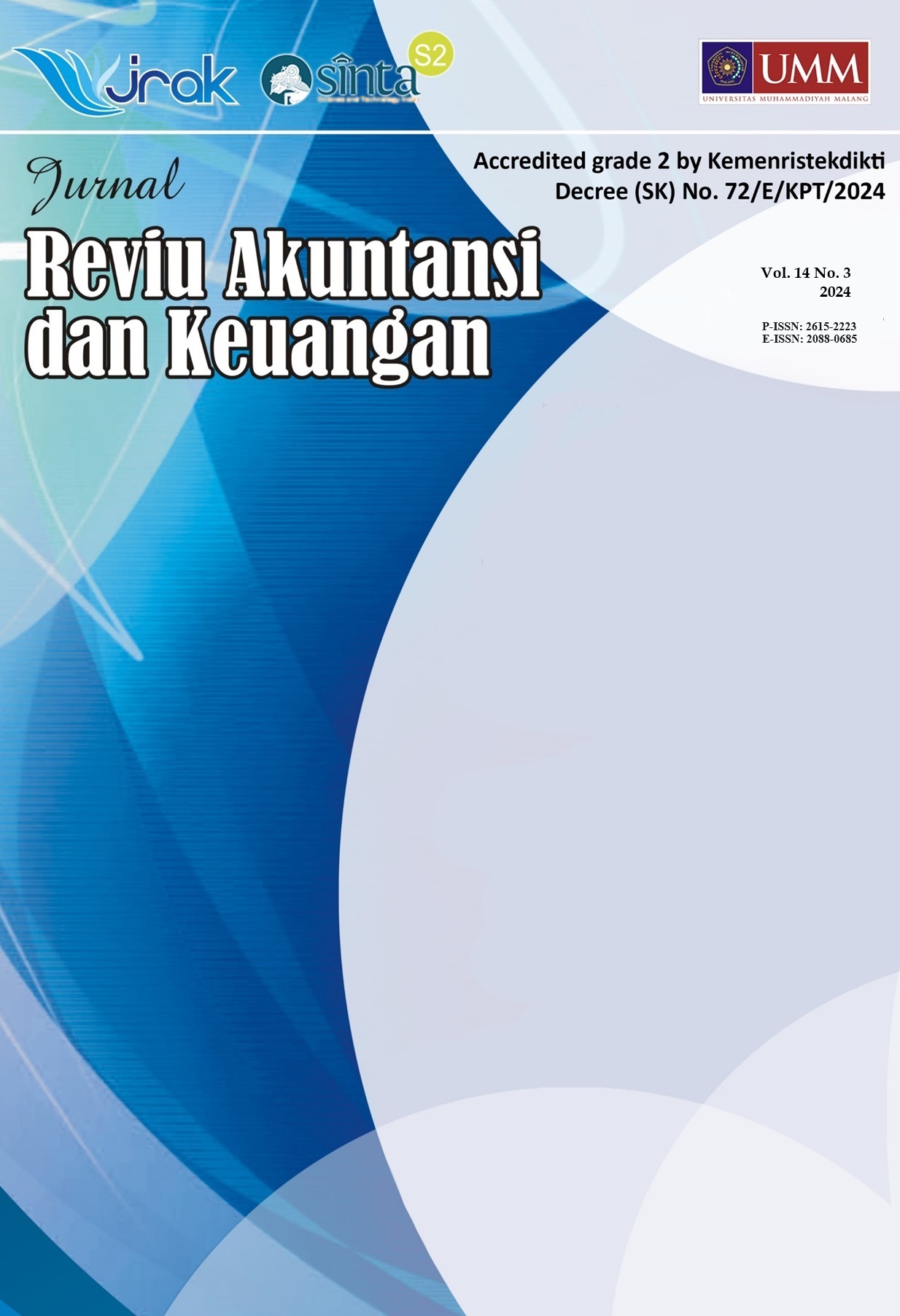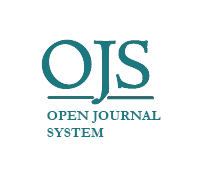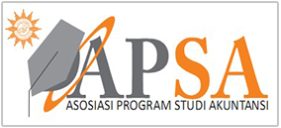From Aimless Stray To Charting The Way: Financing Policy Reforms To Bolster Indonesia’s Downstreaming Strategy
DOI:
https://doi.org/10.22219/jrak.v14i3.35906Keywords:
Development Financing, Downstreaming Industry, Industrial policy, Invesment, Patient CapitalAbstract
Purpose: A major impediment to the entry of domestic firms into these sectors is limited access to financing. This study seeks to analyze the constraints to financing access in Indonesia and to formulate policy recommendations to address them by employing an integrative literature review and comparative analysis of East Asian countries.
Methodology/approach: This paper employs an integrative literature review and comparative analysis to explore potential policy solutions for mobilizing capital for Indonesia’s downstream industry.
Findings: Findings indicate that Indonesia’s financial system, following substantial liberalization, now tends to favor projects with short-term returns over long-term downstream manufacturing projects that are critical for economic transformation.
Practical implications: Indonesia must direct its limited capital towards strategic downstream investments. The paper suggests three policy options: 1) providing direct preferential loans; 2) offering guarantees; and 3) injecting equity into targeted domestic firms.
Originality/value:
The recommendations come with several caveats, including robust governance, specific conditionalities, and stringent evaluation to ensure that financial support targets the most competitive enterprises that can meet the government’s long-term development goals. This research found that while the government's proactive financing presents inherent risk, the greater peril lies in inaction, which could further consign Indonesia to the middle-income trap.
Downloads
References
ADB, & Bappenas. (2019). Policies to Support the Development of Indonesia’s Manufacturing Sector during 2020-2024: A Joint ADB–BAPPENAS Report. https://doi.org/10.22617/TCS199910-2
Algers, J. (2024). Leading with Industrial Policy: Lessons for Decarbonization from Swedish Green Steel. In Industrial Policy 2025: Bringing the State Back In (Again) (pp. 43–57). Roosevelt Institute.
Amsden, A. (2001). The Rise of “The Rest.” Oxford University Press. https://doi.org/10.1093/0195139690.001.0001
Aubert, C., Falck, O., & Heblich, S. (2011). Subsidizing National Champions: An Evolutionary Perspective. In Industrial Policy for National Champions (pp. 63–88). The MIT Press. https://doi.org/10.7551/mitpress/8916.003.0009
Basri, M. C. (2018). Chapter 2: Twenty Years after the Asian Financial Crisis. In Realizing Indonesia’s Economic Potential (p. ch002). International Monetary Fund. https://doi.org/10.5089/9781484337141.071.ch002
Berg-Schlosser, D. (2015). Comparative Studies: Method and Design. In J. D. Wright (Ed.), International Encyclopedia of the Social & Behavioral Sciences (Second Edition) (Second Edition, pp. 439–444). Elsevier. https://doi.org/https://doi.org/10.1016/B978-0-08-097086-8.44008-0
Bisnis Indonesia. (2024). PENJAMINAN INFRASTRUKTUR : PII Tangani 52 Proyek Nasional. Bisnis Indonesia. https://koran.bisnis.com/m/read/20240531/433/1769898/penjaminan-infrastruktur-pii-tangani-52-proyek-nasional
Bryman, A. (2012). Social Research Methods (4th ed.). Oxford University Press.
Cangiano, M., Anderson, B., Alier, M., Petrie, M., & Hemming, R. (2006). Chapter 2. Government Guarantees and Fiscal Risk. In Public-Private Partnerships, Government Guarantees, and Fiscal Risk. International Monetary Fund. https://doi.org/10.5089/9781589064935.058.ch002
CATL. (2022). CATL partners up with Indonesia to boost e-mobility with an investment of nearly 6 billion USD. CATL. https://www.catl.com/en/news/922.html
Chang, H.-J. (2002). Kicking Away the Ladder: Development Strategy in Historical Perspective. Anthem Press.
Chang, H.-J. (2010). 23 Things They Don’t Tell You About Capitalism. Bloomsbury Press.
Cho, Y. J., & Kim, J.-K. (1995). Credit Policies and the Industrialization of Korea. World Bank Group. http://documents.worldbank.org/curated/en/756811468272061144/Credit-policies-and-the-industrialization-of-Korea
Choi, J., & Levchenko, A. (2021). The Long-Term Effects of Industrial Policy. https://doi.org/10.3386/w29263
Choi, J., & Shim, Y. (2022). Technology Adoption and Late Industrialization. SSRN Electronic Journal. https://doi.org/10.2139/ssrn.4308957
CNBC Indonesia. (2023). Dulu Ada Eddy Tansil, Geger Kini Kasus Indosurya Rp 106 T. CNBC Indonesia. https://www.cnbcindonesia.com/news/20230127094816-4-408699/dulu-ada-eddy-tansil-geger-kini-kasus-indosurya-rp-106-t/amp
DiPippo, G., Mazzocco, I., & Kennedy, S. (2022). Estimating Chinese Industrial Policy Spending in Comparative Perspective.
Dunning, J. H., & Lundan, S. M. (2008). Theories of Foreign Direct Investment. In Multinational Enterprises and the Global Economy (pp. 79–115). Edward Elgar Publishing Limited.
Fogel, K., Morck, R., & Yeung, B. (2011). National Champions and Economic Growth. In Industrial Policy for National Champions (pp. 31–62). The MIT Press. https://doi.org/10.7551/mitpress/9780262016018.003.0003
Forbes. (2023). Unlock Success: 8 Proven Strategies To Beat The ~80% VC-Venture Failure Rate. Forbes. https://www.forbes.com/sites/dileeprao/2023/09/28/unlock-success-8-proven-strategies-to-beat-the-80-vc-venture-failure-rate/
Ge, G., Xue, J., & Zhang, Q. (2024). Industrial policy and governmental venture capital: Evidence from China. Journal of Corporate Finance, 84, 102532. https://doi.org/10.1016/j.jcorpfin.2023.102532
Greenwald, B., & Stiglitz, J. E. (2006). Helping Infant Economies Grow: Foundations of Trade Policies for Developing Countries. American Economic Review, 96(2), 141–146. https://doi.org/10.1257/000282806777212206
Hauge, J. (2023). The Future of the Factory: How Megatrends are Changing Industrialization. Oxford University Press.
Hausmann, R., & Rodrik, D. (2003). Economic development as self-discovery. Journal of Development Economics, 72(2), 603–633. https://doi.org/10.1016/S0304-3878(03)00124-X
Helper, S., Krueger, T., & Wial, H. (2012). Why Does Manufacturing Matter? Which Manufacturing Matters? A Policy Framework. SSRN Electronic Journal, 1–53. https://doi.org/10.2139/ssrn.3798089
Hidalgo, C. A. (2021). Economic complexity theory and applications. Nature Reviews Physics, 3(2), 92–113. https://doi.org/10.1038/s42254-020-00275-1
Irwin, T. C. (2007). Government guarantees - allocating and valuing risk in privately financed infrastructure projects (English). World Bank Group. http://documents.worldbank.org/curated/en/287611468339900724/Government-guarantees-allocating-and-valuing-risk-in-privately-financed-infrastructure-projects
ITC. (2024). List of products exported by Indonesia. ITC. https://www.trademap.org/Product_SelCountry_TS.aspx?nvpm=1%7c360%7c%7c%7c%7cTOTAL%7c%7c%7c2%7c1%7c1%7c2%7c2%7c1%7c1%7c1%7c1%7c1
Johnson, C. (1982). MITI and the Japanese Miracle: The Growth of Industrial Policy, 1925-1975. Stanford University Press.
Juhász, R., Lane, N., Oehlsen, E., & Pérez, V. C. (2022). The Who, What, When, and How of Industrial Policy: A Text-Based Approach. SSRN Electronic Journal, 1–39. https://doi.org/10.2139/ssrn.4198209
Juhász, R., Lane, N., & Rodrik, D. (2023). The New Economics of Industrial Policy. https://doi.org/10.3386/w31538
Kim, K. (2019). The state as a patient capitalist: growth and transformation of Indonesia’s development financiers. The Pacific Review, 33(3–4), 635–668. https://doi.org/10.1080/09512748.2019.1573266
Knopf, J. W. (2006). Doing a Literature Review. PS: Political Science & Politics, 39(1), 127–132. https://doi.org/10.1017/S1049096506060264
Lall, S. (2000). The Technological Structure and Performance of Developing Country Manufactured Exports, 1985‐98. Oxford Development Studies, 28(3), 337–369. https://doi.org/10.1080/713688318
Lee, K. (2019). Financing Industrial Development in Korea and Implications For Africa. In C. Monga & J. Y. Lin (Eds.), The Oxford Handbook of Structural Transformation (pp. 548–570). Oxford University Press. https://doi.org/10.1093/oxfordhb/9780198793847.013.24
Mazzucato, M. (2013). The Entrepreneurial State: Debunking Public vs. Private Sector Myths (1st ed.). Anthem Press.
Mazzucato, M., & Rodrik, D. (2023). Industrial Policy with Conditionalities: A Taxonomy and Sample Cases (Working Paper Series (IIPP WP 2023-07)). https://www.ucl.ac.uk/bartlett/publicpurpose/wp2023-07
Ministry of Industry. (2020). Analisis Pembiayaan Industri Manufaktur Non-Migas 2020.
Ministry of Investment. (2024). Laporan Realisasi Penanaman Modal Kementerian Investasi/BKPM. Ministry of Investment. https://www.bkpm.go.id/id/info/realisasi-investasi
Patunru, A. A. (2023). Trade Policy in Indonesia: Between Ambivalence, Pragmatism and Nationalism. Bulletin of Indonesian Economic Studies, 59(3), 311–340. https://doi.org/10.1080/00074918.2023.2282821
PKPPIM. (2013). Should Indonesia (Re) Establish A National Development Bank? https://fiskal.kemenkeu.go.id/kajian/2013/10/17/090104966343707-should-indonesia-re-establish-a-national-development-bank
Reuters. (2020). Indonesia says $9.8 billion EV battery MOU agreed with LG Energy Solution | Reuters. Reuters. https://www.reuters.com/article/us-indonesia-electric-vehicles/indonesia-says-98-billion-ev-battery-mou-agreed-with-lg-energy-solution-idUSKBN2940AW/
Reuters. (2024). Hyundai Motor, LG Energy Solution launch Indonesia’s first EV battery plant | Reuters. Reuters. https://www.reuters.com/business/autos-transportation/hyundai-motor-lg-energy-solution-launch-indonesias-first-ev-battery-plant-2024-07-03/
Rodrik, D. (2004). Industrial Policy for the Twenty-First Century. SSRN Electronic Journal, 1–58. https://doi.org/10.2139/ssrn.617544
Rodrik, D., & Sabel, C. (2022). 2 Building a Good Jobs Economy. In D. Allen, Y. Benkler, L. Downey, R. Henderson, & J. Simons (Eds.), A Political Economy of Justice (pp. 61–95). University of Chicago Press. https://doi.org/doi:10.7208/chicago/9780226818436-003
Snyder, H. (2019). Literature review as a research methodology: An overview and guidelines. Journal of Business Research, 104, 333–339. https://doi.org/10.1016/j.jbusres.2019.07.039
Stojkoski, V., Koch, P., & Hidalgo, C. A. (2023). Multidimensional economic complexity and inclusive green growth. Communications Earth & Environment, 4(1), 130. https://doi.org/10.1038/s43247-023-00770-0
Studwell, J. (2013). How Asia Works: Success and Failure in the World’s Most Dynamic Region. Grove Press.
Su, D., & Yao, Y. (2017). Manufacturing as the key engine of economic growth for middle-income economies. Journal of the Asia Pacific Economy, 22(1), 47–70. https://doi.org/10.1080/13547860.2016.1261481
Ueno, H. (1976). Conception and Evaluation of Japanese Industrial Policy. Japanese Economic Studies, 5(2), 3–63. https://doi.org/10.2753/JES1097-203X05023
Wei, Y., Ang, Y. Y., & Jia, N. (2023). The Promise and Pitfalls of Government Guidance Funds in China. The China Quarterly, 256, 939–959. https://doi.org/10.1017/S0305741023000280
World Bank. (2023). ENTERPRISE SURVEYS: Indonesia 2023 Country Profile. www.worldbank.org
World Bank. (2024). World Development Report 2024.
Zhang, J., Fan, Y., & Liu, Y. (2024). The effects of government venture capital: New evidence from China based on a two-sided matching structural model. Journal of Corporate Finance, 84, 102521. https://doi.org/10.1016/j.jcorpfin.2023.102521
Downloads
Published
Issue
Section
License
Copyright (c) 2024 Bahlil Lahadalia, Chandra Wijaya, Athor Subroto

This work is licensed under a Creative Commons Attribution-NonCommercial-ShareAlike 4.0 International License.

Jurnal Reviu Akuntansi dan Keuangan is licensed under a Creative Commons Attribution-NonCommercial-ShareAlike 4.0 International License.
Authors who publish with this journal agree to the following terms:
- Authors retain copyright and grant the journal right of first publication with the work simultaneously licensed under a Creative Commons Attribution-NonCommercial-ShareAlike 4.0 International License that allows others to share the work with an acknowledgement of the work's authorship and initial publication in this journal.
- Authors are able to enter into separate, additional contractual arrangements for the non-exclusive distribution of the journal's published version of the work (e.g., post it to an institutional repository or publish it in a book), with an acknowledgement of its initial publication in this journal.
- Authors are permitted and encouraged to post their work online (e.g., in institutional repositories or on their website) prior to and during the submission process, as it can lead to productive exchanges, as well as earlier and greater citation of published work (See The Effect of Open Access).










